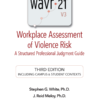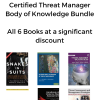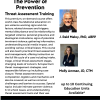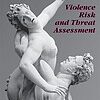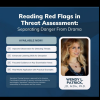Assessing/Managing Violence Risk with Pre-Teens: Using the EARL, V3 (Early Assessment Risk List)
Violent behavior rarely has its onset in adolescence or adulthood. Warning signs and behaviors associated with future antisocial and violent behavior usually present as minor conduct problems in middle childhood (ages 6-12). During this time in development, the brain is still highly malleable, and children can learn self-control, emotion regulation and problem-solving skills that buffer their risk of future violence. Using early identification and targeted, evidence-based interventions, we can improve children’s mental health trajectories and reduce future violence and criminality.
Over 37 years, Dr. Leena Augimeri has led the development of a mental health and violence prevention framework that provides a straightforward way of assessing risk and providing a risk-based intervention. The framework involves: (1) community-based collaborations that help to ensure children are being referred to services in a timely manner, (2) a standardized approach for conducting clinical risk assessment using the EARL-V3 and (3) use of evidence-based programs that are tailored to meet the clinical needs of children with disruptive behavior problems/potential violence and their families. In this eight-hour session, we will cover all steps of this framework, with a particular focus on the EARL-V3 (Early Assessment Risk List, Version 3) and SNAP (Stop Now And Plan), an evidence-based program noted as the ‘most fully developed intervention for children with serious violent and chronic potential.’
Workshop Content:
A comprehensive mental health and violence prevention Framework for middle-years childhood
Structured Professional Judgement (SPJ) approaches to risk assessment
Description of the EARL-V3 (Early Assessment Risk List, Version 3) and all 21 risk-factors
Guidelines for using risk assessment to inform risk management and treatment planning
SNAP (Stop Now And Plan), how it has received evidence-based designations and been scaled effectively.
Workshop Learning Objectives:
Describe the steps involved in identifying middle years children at risk for violence and directing them toward effective treatment.
Identify the most prominent risks associated with antisocial behavior in children.
List the steps to use EARL risk assessments, together with clinical competence, to plan treatment and intervention strategies.
Describe how one evidence-based program (SNAP) was developed, tested and scaled.
Learn how SNAP can improve emotion regulation, self-control and problem-solving skills

